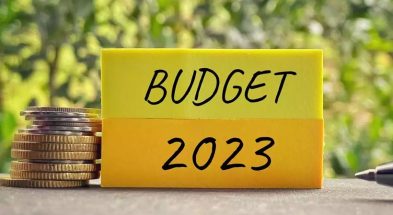Since the UAE Federation was formed, India and UAE have had a robust bilateral relationship. The trade ties have been flourishing since the mid-1960s, and they have continued through the formal creation of the United Arab Emirates to the current era.
Both sides have made significant efforts to improve trade ties, and these efforts have manifested themselves into a strong relationship based on aligning economic and geopolitical considerations.
Age-old trade along the ancient Silk Road has evolved into a full-fledged economic partnership. From trade that was valued at $180 million per annum in the 1970s to a trade value that stands today at $60 billion worth of goods and services and counting, moving seamlessly between the countries. Since then, trade between India and the UAE has grown manifold.
As it currently stands, India is UAE’s second-largest trading partner. As of 2021, India accounted for 9 per cent of the UAE’s trade with the world. Out of which, non-oil imports contributed 13 per cent of the total import value.
The Comprehensive Economic Partnership Agreement (CEPA), recently ratified by the two countries in May 2022, aims to encourage trade further and simultaneously ease trade restrictions by dismantling tariff barriers.
This landmark and comprehensive agreement strives to grant mutual access to markets of both the countries, giving an impetus to bilateral trade and commerce between the trading partners.
India has been known to be forever the proverbial elephant when it comes to international trade negotiations, slow and clumsy. Hence, it is a remarkable feat that the government has concluded a full-fledged Comprehensive Economic Partnership Agreement (CEPA) with the United Arab Emirates (UAE) in a mere 88 days.
India’s hesitation over pursuing new trade agreements has been exhibited by the state’s recent track record concerning trade negotiations. India always appears to dither, whether it attempts to restart talks with the European Union (EU) or the Regional Comprehensive Economic Partnership (RCEP). The negotiations for RCEP were on for six years from 2013, with India pulling out in late 2019.
Nevertheless, with the CEPA agreement now ratified, it is expected to boost the levels of bilateral trade from its current level of US$ 60 billion to an ambitious target of US$ 100 billion during the next few years.
Sectors such as jewellery, textiles, leather goods, software exports and pharma are already experiencing the positive effects of CEPA. There is a proposal to expand the scope of the agreement and bring other sectors under its ambit.
The other sectors being examined for inclusion are civil aviation, financial services, industrial production, transport and infrastructure, logistics and entrepreneurship.
With the UAE having one of the most elaborate and capable supply chains in the region that work as critical enablers for greasing the wheel of the economic machine, many Indian businesses would be making a beeline for the middle-eastern nation.
The CEPA agreement endeavours to underpin the UAE’s economic journey for the coming five decades. It also falls under the country’s ambitious Projects of the 50 plan, a series of massive projects that aim to accelerate its growth over the next five decades.
Its ultimate aim is geared towards laying the foundation that will cement the UAE’s status as a defacto global leader in several vital sectors, along with being the ideal destination for investors and travellers alike from across the globe.
With India’s economy on track to potentially stake claim to the spot of the world’s largest economy early next decade, the agreement grants a foothold and a substantial opportunity for local UAE businesses to gain access to a market filled with 1.3 billion people.
The agreement would entail the UAE with greater access to the Indian market for its major products of dates, metals and petrochemicals. Business opportunities for both oil and non-oil categories are expected to see exponential growth over the next decade.
The reciprocal nature of the CEPA Agreement is evident and unmistakable as it is projected to aid growth to the extent of 1.7% for the UAE over ten years and 0.7% for India over a similar duration. This agreement creates a mutually beneficial situation for both countries. More such trade agreements are on the anvil with other countries that will usher in India’s greater economic prosperity.



















